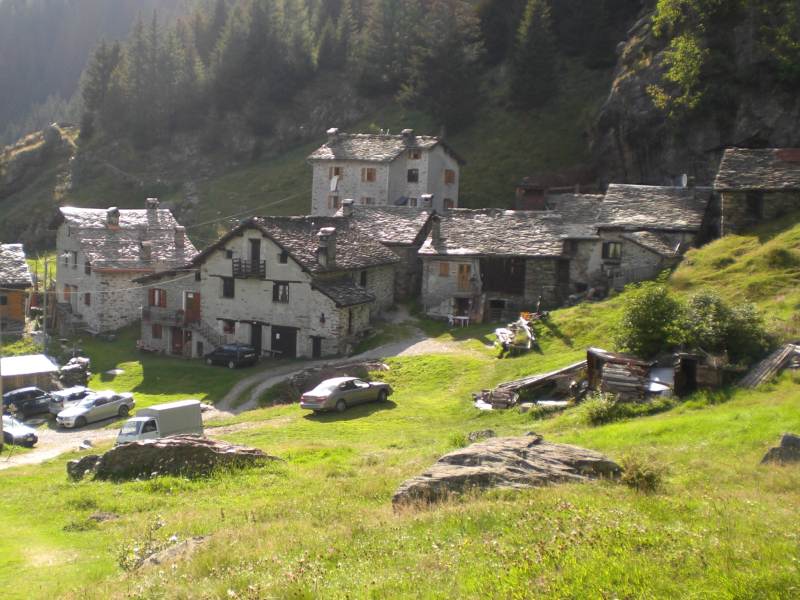by Saveria Masa
In the Middle Ages, the inn in Chiareggio began as a hospice, or place for men and horses to stop and stay, in the place named Bosco, or Chiareggio, and was located half way along the ancient
“Cavallera” road of the Muretto pass, on the route from the main town of Sondrio through the Valmalenco leading to Switzerland (in Engadine and the Val Bregaglia).
The Muretto road was used mainly by Grigioni merchants coming from the Valtellina to purchase first and foremost wine, but also wheat, chestnuts, fabrics and clothes,
"laveggi", i.e. the cooking pots and tools made by turning soapstone on the lathe,
"piode" the slate roof tiles, cattle and dairy products.
Having completed their business in the morning, the Grigioni merchants would leave Sondrio and spend the night in the inn in Chiareggio, situated on the alp of the same name at a height of 1612 m.
The next day, they crossed the Muretto pass and the travellers had another opportunity to stop and refresh themselves at the Maloja pass or at the other hopices and inns scattered along the route.
The first document to be found so far giving proof of the existence of an inn on the alp of Chiareggio is a deed of 1537, which refers to a certain Giovanolo Bardea of Lanzada, the so-called owner of the inn in Chiareggio, who was allowed to graze his cows on the meadows of Chiareggio.
 The "Corte" (Chiareggio) - Rural buildings.
The "Corte" (Chiareggio) - Rural buildings.
It is not so easy to say exactly where the ancient inn stood, as the part that still exists today probably only dates back to the 17th century.
It is possible that the first inn was still in the main square of the village near the seventeenth century inn, and that the latter was merely a restoration of the original one.
However, it has been confirmed that the older inn must have been situated at the Court, the "Corte", to the north-east of Chiareggio, just past the Torrent Nevasco for anyone coming from Sondrio.
The "Corte" appears to have been the first settlement in Chiareggio.
According to tradition, it was not only an inn, but probably had large stables capable of housing up to seventy pack horses.
Nowadays it is possible to visit the entrance hall of the inn, which was built about halfway through the 17th century: one of the interior doors actually bears the date 1665.
Built with large blocks of stone, it consisted of two floors: the ground floor was accessed via a central entrance, which gave on to a long, vaulted corridor like a tunnel and, as a result, known as tróna.
Numerous rooms led off the corridor, which were probably used as a tavern and storerooms for the wine and goods staying there.
The tróna then gave access to the “stallazzo”, the large stable, to hold the pack horses.
A stone staircase led up from the tróna to the floor above with another corridor, also with a vaulted ceiling.
This accessed the travellers' rooms and the innkeeper's lodgings.
The owner of the inn - not to be confused with the innkeeper - kept his own room available, called the "stua vecchia", a wood-pannelled room, "mittà dell'involto di sopra", measuring half the cellar on the top floor.